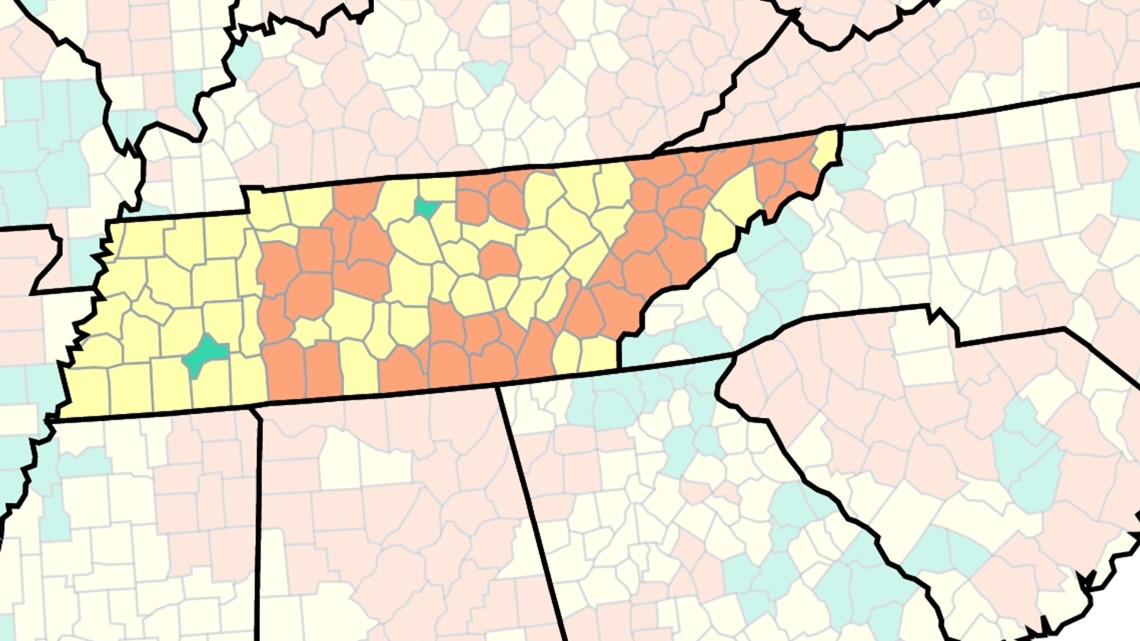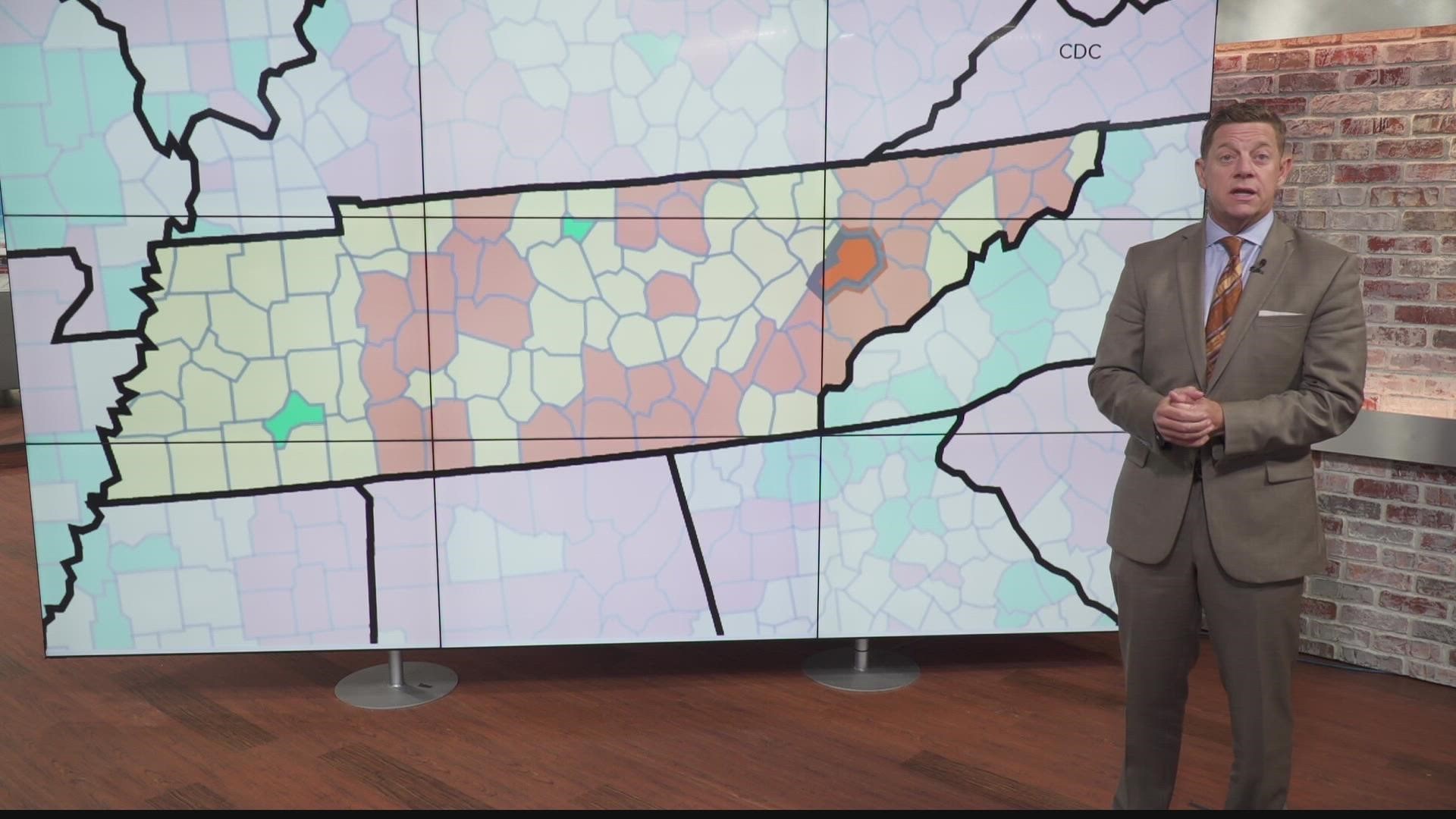KNOXVILLE, Tenn. — The Centers for Disease Control and Prevention moved Knox County and several other East Tennessee counties back into the "high" risk category for COVID-19.
The CDC recommends people in counties at the "high" COVID-19 community level category wear masks indoors while in public and while on public transportation. They also said people should get tested for COVID-19 if they show symptoms. Anyone a high risk for severe illness should also consider taking additional precautions to stay safe.
The CDC recommends people in counties in the "medium" risk category take some precautions to stay safe, such as wearing a mask if they have symptoms or if they are exposed to someone with COVID-19. However, it does not specifically recommend everyone wear masks inside public areas if the county is in a "medium" risk category.
More than half of all East Tennessee counties were in the "high" category as of Tuesday. A full list of counties and their risk levels are available below.


High-Risk East TN Counties (Masks recommended in public indoors)
- Claiborne County
- Hawkins County
- Hamblen County
- Hancock County
- Grainger County
- Union County
- Knox County
- Jefferson County
- Sevier County
- Blount County
- Loudon County
- Monroe County
- McMinn County
- Meigs County
Medium-Risk East TN Counties (Extra precautions for those with high-risk conditions)
- Cocke County
- Greene County
- Anderson County
- Campbell County
- Scott County
- Morgan County
- Cumberland County
- Roane County
- Rhea County
- Fentress County
Last month, the CDC also relaxed a few more COVID-19 recommendations that had been in place since the start of the pandemic two and a half years ago, including dropping its quarantine rules for people who come in close contact with someone infected with COVID-19. The CDC is no longer recommending schools implement "test-to-stay" policies now that it has dropped the quarantine recommendation.
The CDC also removed guidance on social distancing, which recommended people to stay at least 6 feet apart and stick to small groups.
The CDC uses the three-tiered system to gauge the risk COVID-19 has on an area -- particularly on local hospital capability -- by comparing seven-day community spread with hospital admissions and bed availability. The CDC stopped using base "community transmission" levels in early 2022 as its primary risk indicator, saying those levels now are only provided to help healthcare facilities determine infection control measures.

